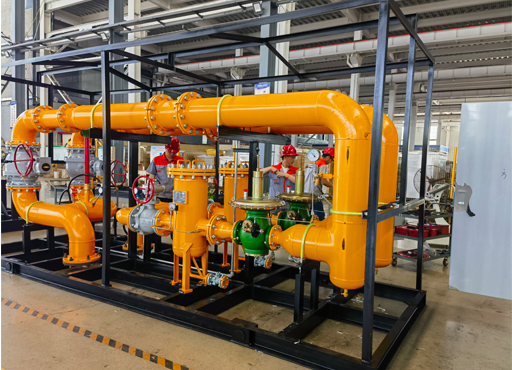
Dec . 03, 2024 10:45
Back to list
محطة تخفيض ضغط الغاز الطبيعي
Natural Gas Pressure Reduction Stations An Overview
Natural gas is a critical energy source that powers homes, industries, and vehicles worldwide. However, the gas must be transported and distributed safely and efficiently, which requires careful management of its pressure. One key component of this process is the natural gas pressure reduction station (PRDS).
What is a Pressure Reduction Station?
A pressure reduction station is a facility that reduces the high pressure of natural gas from transmission pipelines before it reaches the end-users such as residential areas, commercial buildings, and industrial facilities. This is essential because the pressure at which natural gas is transported over long distances is significantly higher than what is suitable for consumption. The proper reduction of pressure ensures that gas can flow safely and reliably into homes and businesses without causing damage or posing risks.
Components and Functionality
A typical pressure reduction station consists of several essential components, including
1. Pressure Regulators These devices reduce the high pressure of incoming gas to a lower, regulated pressure. They are crucial for maintaining consistent pressure levels, regardless of fluctuations in the pipeline's pressure.
2. Filtration Systems Before gas enters the reduction station, it often passes through filters to remove impurities such as dust, moisture, and other particulates that could damage downstream equipment or cause safety hazards.
3. Safety Systems Pressure reduction stations are equipped with various safety features, including pressure relief valves and emergency shut-off systems. These systems ensure safety in the event of pressure surges or equipment failures.
.
5. Control Systems Modern PRDS are often automated and remotely monitored, allowing for real-time adjustments and alerts if abnormalities arise.
محطة تخفيض ضغط الغاز الطبيعي

Importance of Pressure Reduction Stations
Pressure reduction stations play a vital role in the natural gas supply chain for several reasons
- Safety By reducing the pressure of natural gas before it enters residential and commercial systems, PRDS significantly mitigate the risk of leaks and explosions. High-pressure gas can be unpredictable, and proper regulation protects both infrastructure and public safety.
- Efficiency These stations enhance the efficiency of gas distribution. By ensuring that gas is delivered at the appropriate pressure, they help maintain a smooth and consistent flow, which is essential for comfort in homes and productivity in industries.
- Environmental Compliance Many PRDS are designed to monitor emissions and other environmental impacts. By ensuring optimal operation, they help gas companies comply with environmental regulations and contribute to more sustainable practices.
Challenges and Future Prospects
Despite their importance, pressure reduction stations face several challenges. Aging infrastructure, the rising demand for natural gas, and the transition to renewable energy sources all present significant hurdles. Maintaining and upgrading PRDS to accommodate new technologies and higher efficiencies will be crucial in the coming years.
Moreover, as the energy landscape evolves, there is an increasing focus on integrating renewable energy sources, such as biogas and hydrogen, into the existing natural gas infrastructure. This transition will require innovative designs and adaptations for PRDS to ensure they can handle these new energy forms effectively.
Conclusion
Natural gas pressure reduction stations are integral to the safe and efficient delivery of natural gas to consumers. They not only protect infrastructure and public safety but also enhance the overall effectiveness of gas distribution systems. As the energy market transforms, the evolution of PRDS will be critical in addressing new challenges and ensuring a reliable energy supply for the future. The ongoing investment in modernizing these facilities will play a key role in supporting both current needs and future demands in the energy sector.
Next:
Latest news
-
Safety Valve Spring-Loaded Design Overpressure ProtectionNewsJul.25,2025
-
Precision Voltage Regulator AC5 Accuracy Grade PerformanceNewsJul.25,2025
-
Natural Gas Pressure Regulating Skid Industrial Pipeline ApplicationsNewsJul.25,2025
-
Natural Gas Filter Stainless Steel Mesh Element DesignNewsJul.25,2025
-
Gas Pressure Regulator Valve Direct-Acting Spring-Loaded DesignNewsJul.25,2025
-
Decompression Equipment Multi-Stage Heat Exchange System DesignNewsJul.25,2025

